Avantor® ACE® Knowledge notes
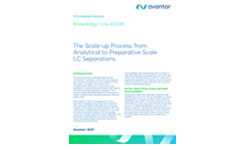
The Scale-up Process: from Analytical to Preparative Scale LC Separations
This knowledge note demonstrates how to achieve a high-yield preparative scale separation and confirm the purity of the resulting isolated fractions.

Approaches for Reducing the Environmental Impact and Increasing Throughput of LC Separations
This article uses isocratic and gradient examples to demonstrate how significant reductions in mobile phase consumption and waste can be achieved by migrating existing methods onto smaller column formats which maintaining chromatographic results.
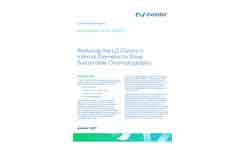
Reducing the LC Column’s Internal Diameter to Dive Sustainable Chromatography
This knowledge note highlights how reducing the LC column internal diameter can help significantly reduce the environmental impact of liquid chromatography moving towards more sustainable laboratory practices.
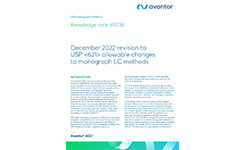
December 2022 revision to USP <621> allowable changes to monograph LC methods
This knowledge note reviews and compares the recent changes to allowable adjustments made by the USP. This includes the significant revisions that have been made to the guidance for gradient methods.

How to Determine Column Volume and Porosity
This Knowledge Note explains how to calculate and experimentally determine column volume and porosity.
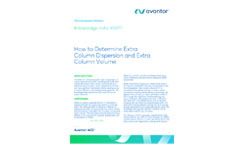
How to Determine Extra Column Dispersion and Extra Column Volume
Extra column volume and dispersion can seriously affect column performance. Here we explain why, how to experimentally measure and approaches to help reduce their impact.

Gradient Method Translation Using the ACE LC Translator
The free to download ACE LC Translator can be used to simplify translating gradient methods between different format columns.
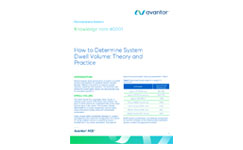
How to determine dwell volume of an HPLC or UHPLC system
Determining the dwell volume of an LC system is very useful as it is the basis of gradient elution method transfer.

Understanding the Relationship Between Particle Size, Performance and Pressure
Have you ever been confused as to the best solution to a certain separation problem? We explain the effect of these parameters on performance.
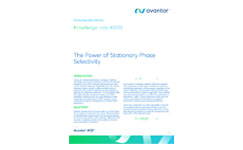
The Power of Stationary Phase Selectivity
One of the key variables in you method development is stationary phase selectivity. You can learn more about this important tool.
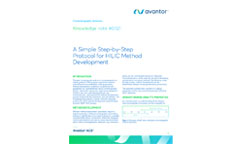
A Simple Step-by-Step Protocol for HILIC Method Development
If you are looking for a clear introduction to the practicalities of HILIC, this is a comprehensive guide for those unfamiliar with this mode of HPLC.
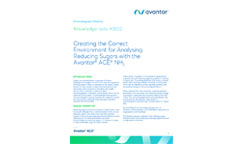
Creating the Correct Environment for Analysing Reducing Sugars
How you can create the correct environment for the analysis of monosaccarides and reducing disaccharides.

The Importance of Sample Diluent in HILIC
Your choice of sample diluent in HILIC can have a profound effect on the chromatography. This note explains why.
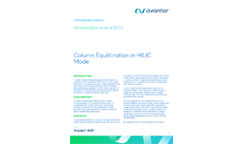
Column Equilibration in HILIC Mode
Correct care and use is essential to maximise the lifetime of any (U)HPLC column. This Knowledge note summarises simple routine practices that should be followed to maximise performance.
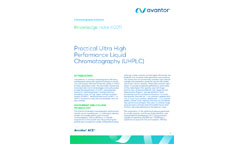
Practical Ultra High Performance Liquid Chromatography (UHPLC)
Learn how UHPLC can be used to dramatically increase sample throughput and produce ultra-high resolution separations of complex samples.
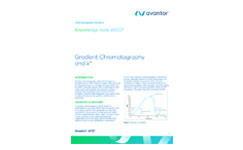
Gradient Chromatography and k*
This Knowledge Note introduces the key concepts of gradient chromatography and explains how to determine appropriate gradient conditions for a separation.
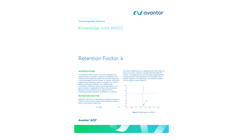
Retention Factor, k
A discussion of how retention factor (k), can be used to compare analyte retention between systems for a defined set of method conditions.
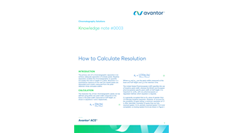
How to Calculate Resolution
This Knowledge note discusses how to calculate chromatographic resolution

Column Care, Cleaning and Storage
Correct care and use is essential to maximise the lifetime of any (U)HPLC column. This Knowledge note summarises simple routine practices that should be followed to maximise performance.
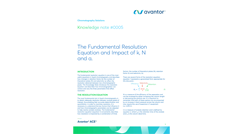
The Fundamental Resolution Equation and Impact of k, N and α.
This Knowledge note introduces the resolution equation and describes how chromatographers can control and vary the 3 parameters.

UHPLC Column Connections
This Knowledge Note explains how poor connections can impact UHPLC performance and how to avoid these problems.
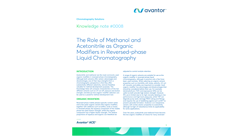
The Role of Methanol and Acetonitrile as Organic Modifiers in Reversed-phase Liquid Chromatography
This article compares the characteristics of Methanol & Acetonitrile, such as UV cut-off, pressure and elution order before discussing how organic solvent selection can be a powerful method development tool.

The Effect of Sample Diluent on Peak Shape
A discussion of the key considerations for eluent choice and the negative effects that could be observed if an unsuitable diluent is used.
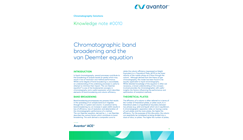
Chromatographic band broadening and the van Deemter equation
Some degree of band broadening is unavoidable, however this Knowledge note looks at the underlying theory in order to help minimise it’s impact on methods.
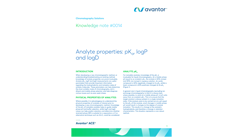
Analyte properties: pKa, logP and logD
Analyte pKa, logP and logD measurements are useful parameters that can help determine the most suitable mode of chromatography, aid in diluent and mobile phase selection and help diagnose various issues such as poor peak shape.

USP Column Codes
This Knowledge Note provides the USP listing for all Avantor® ACE® phases, and the general description for all the USP Codes.*
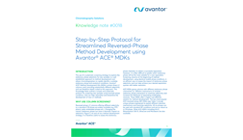
Step-by-Step Protocol for Streamlined Reversed-Phase Method Development using Avantor® ACE® MDKs
This Knowledge Note outlines a simple and systematic protocol for screening new samples using reversed-phase conditions, that can help rationalise and streamline the development of new LC methods.

Avantor® ACE® UltraCore and Solid Core Technology
This Knowledge Note discusses the theory behind solid core technology and introduces the Avantor® ACE® UltraCore range of solid core columns.

Increasing HPLC / UHPLC Sample Throughput: Doing More in Less Time
This article demonstrates how throughput for existing isocratic and gradient analytical LC methods can be increased using existing HPLC instruments and, where applicable, by upgrading to UHPLC.
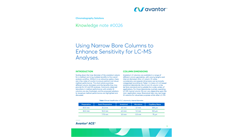
Using Narrow Bore Columns to Enhance Sensitivity for LC-MS Analyses.
This short article examines different column diameters and the benefits they may provide for UV and MS analyses. Commonly observed reductions in method performance with smaller ID columns are also illustrated, and the proposed solutions to recapture metho

Transferring LC Methods Between Different Instruments Using the Avantor® ACE® LC Translator Tool
This Knowledge Note discusses the key parameters which require attention and shows how the Avantor® ACE® LC Translator can assist in simplifying the process to help achieve reliable method transfer.
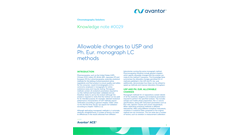
Allowable changes to USP and Ph. Eur. monograph LC methods
This Knowledge Note summarises the allowable changes permitted for LC methods published in the USP and Ph. Eur. and additionally, demonstrates how these can be utilised to speed up methods and improve laboratory throughput.
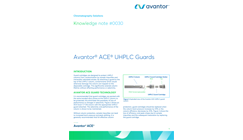
Avantor® ACE® UHPLC Guards
This article discusses how guard cartridges protect UHPLC columns from contamination by sample impurities and irreversibly adsorbed solutes.
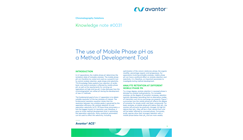
The use of Mobile Phase pH as a Method Development Tool
This Knowledge Note explains how retention of acidic, basic and neutral analytes is affected by mobile phase pH, as well as the requirements for carrying out separations at high and low pH.

The Importance of Column Temperature in Liquid Chromatography
This Knowledge Note discusses the impact that column temperature can have on LC separations, why it is important to consider during method development and limitations to avoid column and sample stability issues.